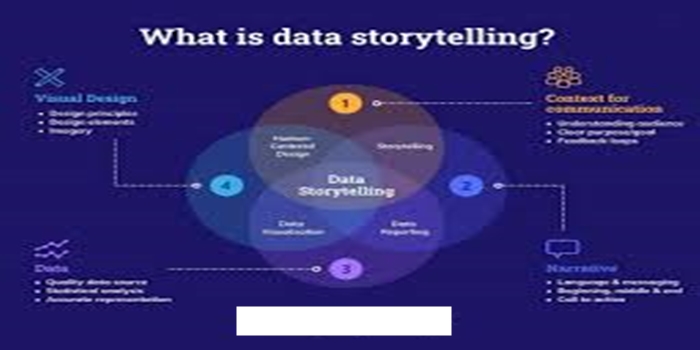In this article, we discussed the meaning of data storytelling in business growth, the elements, we also state the role of data storytelling in business growth.
Definition
Data storytelling in business growth means using data and analytics to create compelling narratives that inform decisions, drive action, and ultimately lead to meaningful business outcomes. It’s about translating complex data analysis into relatable stories that help stakeholders understand insights and their potential impact, fostering a data-driven culture and driving better business performance.
Elements of Data Storytelling:
Data: The foundation of the story, providing insights and evidence.
Narrative: The story’s structure and flow, making the data more relatable and engaging.
Visualizations: Presenting data in a clear, concise, and visually appealing way.
Setting: The context or background of the story, providing information about the situation.
Characters: The people or entities involved in the story, adding a human element.
Conflict: The problem or challenge that the story is addressing, creating tension and driving the narrative.
Resolution: The proposed solution or action resulting from the data analysis.
How these elements contribute to business growth:
Improved Decision-Making:
By understanding the data through a story, decision-makers can make more informed choices.
Enhanced Engagement:
Data stories are more likely to be remembered and understood than raw data, leading to better engagement with the message.
Clearer Communication:
Storytelling simplifies complex data, making it easier to communicate insights to a wider audience.
Actionable Insights:
Data stories can be used to identify trends, opportunities, and areas for improvement, leading to concrete actions that drive growth.
The Role of Data Storytelling in Business Growth:
- Improved Communication and Engagement:
Data storytelling makes complex data accessible and engaging for both technical and non-technical audiences.
It helps businesses communicate insights in a way that resonates with stakeholders, fostering understanding and alignment.
By weaving narratives around data, businesses can highlight opportunities, address challenges, and inspire action, leading to better buy-in and decision-making.
- Enhanced Decision-Making:
Data storytelling facilitates data-driven decision-making by presenting insights in a clear and meaningful way.
It helps businesses move beyond gut feelings and biases, making decisions based on hard evidence and data-driven insights.
By providing context and explaining the implications of the data, data storytellers can help stakeholders understand what steps need to be taken to achieve desired outcomes.
- Increased Understanding of Customers and Markets:
Data storytelling allows businesses to better understand their customers by analyzing customer behavior patterns and preferences.
It helps identify new opportunities for growth and expansion by uncovering insights from customer data.
By understanding customer needs and preferences, businesses can develop more targeted marketing campaigns and improve customer satisfaction.
- Strategic Advantage and Competitive Differentiation:
Data storytelling is not just a communication tool; it’s a strategic enabler that transforms data into actionable knowledge.
It helps businesses distinguish themselves in a data-rich world by effectively communicating their findings and driving action.
By turning insights into compelling calls to action, data storytelling can accelerate business success in a competitive environment.
- Building Trust and Alignment:
Data storytelling can help align teams, convince stakeholders, and foster trust in decisions by embedding data into compelling narratives.
It helps create a sense of relatability and authenticity, sparking an emotional connection with the audience.
By fostering engagement and understanding, data storytelling can help build trust and alignment across the organization.
Conclusion
Data storytelling, the practice of using data and visuals to tell a compelling narrative, is crucial for business growth because it transforms raw information into actionable insights, engaging audiences, and facilitating data-driven decision-making. This approach simplifies complex data, making it more accessible and memorable, ultimately leading to better understanding and faster, more confident decisions.
READ: The Power of Storytelling in Content Creation.


